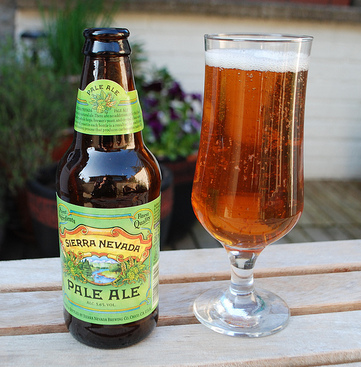Galveston Liquor Stores: Find Your Favorite Spirits and Much More
Galveston Liquor Stores: Find Your Favorite Spirits and Much More
Blog Article
Grasping the Craft of Purification: a Deep Study Distillery Traditions
Exploring the complex art of distillation unveils a globe soaked in classic customs that have actually shaped the spirits we enjoy today. From the old beginnings of distillation strategies to the modern evolution of distillery devices, each action in the process carries with it an abundant tapestry of background and knowledge. As we explore the fragile equilibrium of traditional versus contemporary distilling techniques and reveal the importance of essential ingredients, a much deeper understanding emerges of the profound effect distillery customs have on the spirits we appreciate.
Origins of Distillation Strategies
The development of distillation techniques has a rich history that traces back to old human beings. The concept of separating parts based on their various boiling factors laid the structure for the sophisticated distillation procedures we have today.
The earliest proof of distillation go back to around 3000 BC in Mesopotamia, where clay pots were utilized to boil down perfumes and aromatic oils. The Egyptians further progressed these strategies, using distillation for medical functions and embalming techniques. The Greeks, notably figures like Aristotle and Hippocrates, added to the theoretical understanding of purification.
Gradually, distillation infect regions like India, China, and the Center East, each society adding its one-of-a-kind touch to the craft. The evolution of distillation methods continued via the Center Ages and the Renaissance, eventually bring about the varied variety of purification processes utilized in contemporary distilleries worldwide.
Evolution of Distillery Tools

With developments in innovation and a much deeper understanding of the distillation process, contemporary distilleries now make use of a selection of innovative equipment to produce spirits of the finest. Today, purification tools consists of column stills, reflux stills, and hybrid stills, each designed to accommodate details distillation requirements. These modern stills use much better temperature level law, boosted purification accuracy, and higher efficiency in separating alcohol from contaminations.
In addition to stills, distilleries currently use innovative condensers, fermenters, and filtration systems to additional improve the extract. The advancement of distillery tools remains to play an essential duty fit the diverse variety of spirits readily available in the market today.
Typical Vs. Modern Distilling Practices
Alternatively, modern-day distilling practices leverage innovative modern technology and advancement to streamline production procedures and boost uniformity. Automated systems, computerized controls, and advanced equipment make it possible for modern distilleries to produce spirits much more effectively and with greater accuracy.
While traditional distilling practices are treasured for their heritage and the distinct tastes they Related Site produce, modern approaches supply advantages in terms of scalability, top quality control, and sustainability. By integrating clinical improvements and contemporary design, distillers can maximize production, reduce waste, and satisfy the demands these days's market a lot more successfully. Inevitably, the option between typical and contemporary distilling techniques usually depends on the distillery's objectives, worths, and target audience.
Key Ingredients in Distillation Refine
Within the craft of distillation, the selection of key components plays a crucial role in establishing the flavor account and top quality of the spirits produced. The main ingredients utilized in the distillation procedure are normally water, yeast, visit their website and a fermentable resource such as grains, fruits, or sugarcane.
Water is a fundamental component as it not just weakens the alcohol material to a palatable degree yet additionally influences the overall mouthfeel and texture of the spirit. The top quality and mineral web content of the water used can substantially influence the last item.
Yeast is another vital active ingredient that transforms the sugars existing in the fermentable resource into alcohol with the process of fermentation. Different strains of yeast can create varying fragrances and tastes, contributing to the one-of-a-kind qualities of the spirit.

Impact of Distillery Traditions on Spirits
The influence of longstanding distillery traditions on spirits prolongs beyond the selection of key components, forming the extremely essence and character of the final distilled products (Galveston Whiskey). These traditions, gave through generations, play a crucial duty in defining the one-of-a-kind taste accounts and qualities that identify one spirit from an additional
Distillery traditions incorporate a broad range of techniques, from the specific strategies used in purification to the selection old procedures utilized. For instance, making use of conventional copper pot stills in bourbon manufacturing is thought to present particular tastes and features that are very valued by aficionados. Similarly, the aging of spirits in oak barrels, a practice deeply rooted in distilling customs, adds to the advancement of complex aromas and tastes over time.

Conclusion
From the origins of distillation strategies to the modern methods, the influence of distillery traditions on spirits is undeniable. Distillery practices play an essential function in shaping the spirits sector and maintaining the heritage of distillation techniques.
Throughout the background of distillation, the tools made use of in distilleries has gone through substantial advancement to improve efficiency and top quality of the purification process.With advancements in modern technology and a deeper understanding of the purification process, modern-day distilleries now use a range of innovative devices to generate spirits of the highest possible high quality. Today, distillation tools includes column stills, reflux stills, and hybrid stills, each created to provide to specific purification needs. From the origins of purification strategies to the contemporary techniques, the impact of distillery customs on spirits is undeniable. Distillery traditions play an essential function in forming the spirits sector and preserving the heritage of purification methods.
Report this page